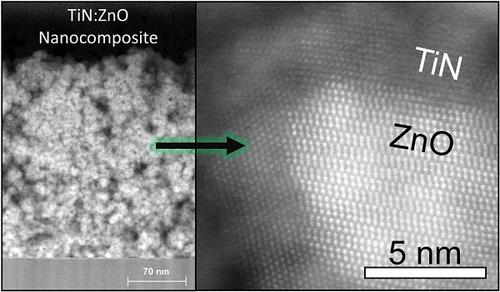当前位置:
X-MOL 学术
›
Plasma Processes Polym.
›
论文详情
Our official English website, www.x-mol.net, welcomes your
feedback! (Note: you will need to create a separate account there.)
Nanocrystal‐based inorganic nanocomposites: A new paradigm for plasma‐produced optoelectronic thin films
Plasma Processes and Polymers ( IF 2.9 ) Pub Date : 2020-02-26 , DOI: 10.1002/ppap.202000002 Chad A. Beaudette 1 , Xiaojia Wang 1 , Uwe R. Kortshagen 1
Plasma Processes and Polymers ( IF 2.9 ) Pub Date : 2020-02-26 , DOI: 10.1002/ppap.202000002 Chad A. Beaudette 1 , Xiaojia Wang 1 , Uwe R. Kortshagen 1
Affiliation

|
Nanocrystal‐based nanocomposites are biphasic materials with intriguing optoelectronic properties. They are formed through, first, plasma‐synthesis of nanocrystals, followed by a second, supersonic impact deposition on translated substrates to form densely packed nanocrystal networks at high deposition rates. Third, dense nanocomposites are formed by subsequent infilling of the voids in the nanocrystal networks with a second phase matrix material using thermal‐ or plasma‐enhanced atomic layer deposition. This paper reviews recent efforts to achieve excellent electronic transport in these nanocomposites. It then provides a perspective on how the biphasic nature of these materials can be used to independently control several materials properties and endow materials with multiple functionalities.
中文翻译:

基于纳米晶体的无机纳米复合材料:等离子生产的光电薄膜的新范例
基于纳米晶体的纳米复合材料是具有吸引人的光电特性的双相材料。它们是通过首先进行纳米晶体的等离子体合成,然后在已平移的基板上进行第二次超声冲击沉积形成的,从而以高沉积速率形成紧密堆积的纳米晶体网络。第三,致密的纳米复合材料是通过使用热增强或等离子增强的原子层沉积,用第二相基质材料填充纳米晶体网络中的空隙而形成的。本文回顾了近年来为在这些纳米复合材料中实现出色的电子传输所做的努力。然后,它提供了有关如何将这些材料的双相性质用于独立控制几种材料特性并赋予材料多种功能的一种见解。
更新日期:2020-02-26
中文翻译:

基于纳米晶体的无机纳米复合材料:等离子生产的光电薄膜的新范例
基于纳米晶体的纳米复合材料是具有吸引人的光电特性的双相材料。它们是通过首先进行纳米晶体的等离子体合成,然后在已平移的基板上进行第二次超声冲击沉积形成的,从而以高沉积速率形成紧密堆积的纳米晶体网络。第三,致密的纳米复合材料是通过使用热增强或等离子增强的原子层沉积,用第二相基质材料填充纳米晶体网络中的空隙而形成的。本文回顾了近年来为在这些纳米复合材料中实现出色的电子传输所做的努力。然后,它提供了有关如何将这些材料的双相性质用于独立控制几种材料特性并赋予材料多种功能的一种见解。











































 京公网安备 11010802027423号
京公网安备 11010802027423号